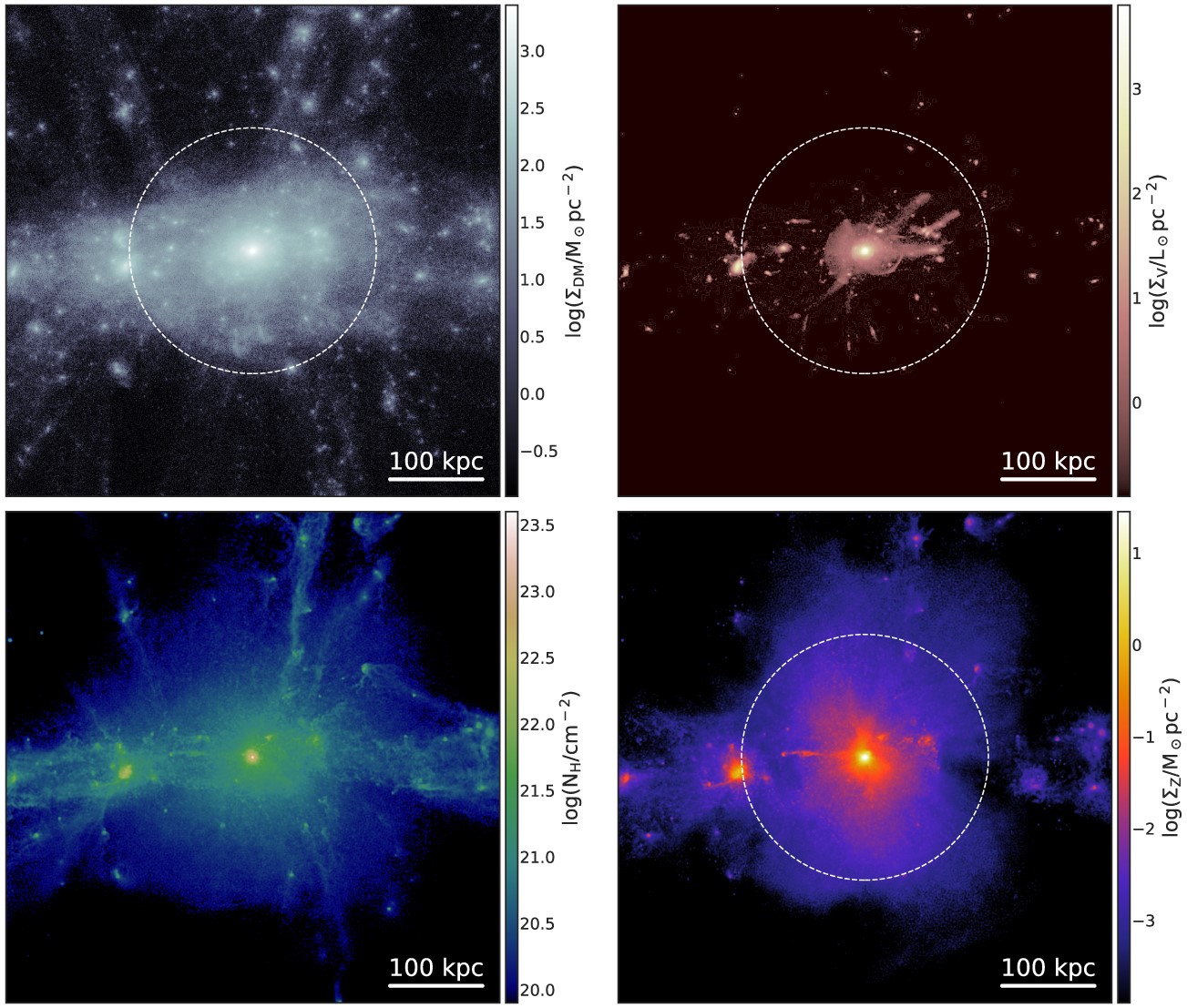AGN radiation imprints on the circumgalactic medium of massive galaxies
Abstract
Active galactic nuclei (AGNs) in cosmological simulations generate explosive feedback that regulates star formation in massive galaxies, modifying the gas phase structure out to large distances. Here, we explore the direct effects that AGN radiation has on gas heating and cooling within one high-resolution z = 3 dark matter halo as massive as a quasar host (Mh = 1012.5M⊙), run without AGN feedback. We assume AGN radiation to impact the circumgalactic medium (CGM) anisotropically, within a bi-cone of angle α. We find that even a relatively weak AGN (black hole mass M• = 108M⊙ with an Eddington ratio λ = 0.1) can significantly lower the fraction of halo gas that is catastrophically cooling compared to the case of gas photoionized only by the ultraviolet background (UVB). Varying M•, λ, and α, we study their effects on observables. A 109M⊙ AGN with λ = 0.1 and $\alpha \approxeq 60^{^{\rm o}}$ reproduces the average surface brightness (SB) profiles of Ly α, He II, and C IV, and results in a covering fraction of optically thick absorbers within observational estimates. The simulated SB$_{\rm C\, \rm{\small IV}}$ profile is steeper than observed, indicating that not enough metals are pushed beyond the very inner CGM. For this combination of parameters, the CGM mass catastrophically cooling is reduced by half with respect to the UVB-only case, with roughly same mass out of hydrostatic equilibrium heating up and cooling down, hinting to the importance of self-regulation around AGNs. This study showcases how CGM observations can constrain not only the properties of the CGM itself, but also those of the AGN engine.
- Publication:
-
Monthly Notices of the Royal Astronomical Society
- Pub Date:
- January 2024
- DOI:
- 10.1093/mnras/stad3410
- arXiv:
- arXiv:2311.01503
- Bibcode:
- 2024MNRAS.527.8078O
- Keywords:
-
- methods: numerical;
- galaxies: haloes;
- galaxies: high-redshift;
- quasars: absorption lines;
- quasars: emission lines;
- Astrophysics - Astrophysics of Galaxies
- E-Print:
- accepted for publication in MNRAS
